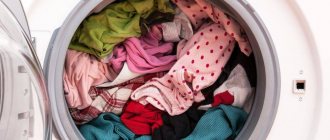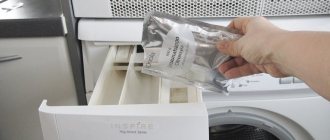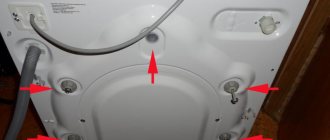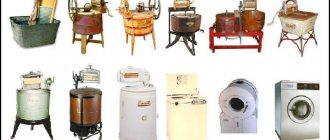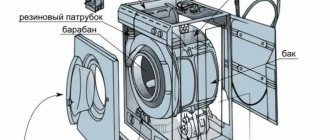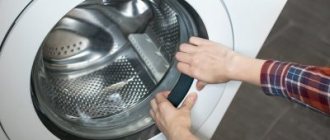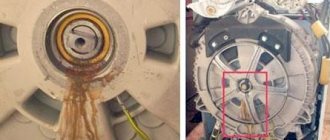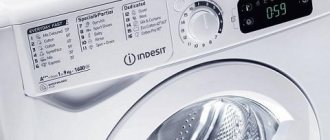In order for the washing machine to last a long time and operate smoothly, it is necessary to handle it correctly. It is mainly important to know where to put the powder in the washing machine and where to add the bleach, stain remover and conditioner.
All modern washing units are equipped with trays designed for storing detergents. However, the chemical industry offers different compositions for washing, both in the form of powders and liquids. There are also special-purpose products: stain removers, bleaches, rinses and others. And often we cannot immediately figure out which compartment of the tray is intended for what.
What types of detergents are there and what are they for?
The range of household chemicals stores is wide and varied, and counters with laundry detergents are full of a huge number of bright boxes and bottles. How to figure this out? The main types of washing compositions can be distinguished:
- powders (intended for main wash);
- compositions in the form of liquids (washing gel, rinse aid, stain remover and fabric softener);
- tablets and capsules (contain concentrated compressed laundry detergent or gel).
Whatever product you use, pay attention to the amount of foam formed. If there is too much of it, this indicates that the dose of the substance has been exceeded and needs to be adjusted. Typically, these recommendations can be found on the packaging of the powder or gel.
It is also important to choose products marked “automatic” for machine washing and pour or pour the selected composition only into the appropriate compartment of the tray.
What are the types of liquid products?
The range of liquid products for automatic washing is huge. Some formulations are famous for their high efficiency, others provide average results, and others absolutely fail to cope with the task assigned to them. The selection of gel for the Indesit washing machine should be taken seriously, taking into account all the characteristics of the composition. Here is a review of liquid powders from different manufacturers.
- Universal liquid LOREMS. Suitable for cleaning both white and colored laundry. Copes with stubborn stains. Dissolves in seconds even in cold water. The concentrated product is economical, convenient to dose, and easy to store. The composition is phosphate-free, hypoallergenic. The price of a 3-liter bottle is about 900 rubles.
- Gel-con. Can be used for both automatic and hand washing. Suitable for all shades of fabrics. The composition has earned a huge number of positive reviews from users, as it provides high quality cleaning and removes the most stubborn stains. A liter bottle of the composition costs about 280 rubles.
- Persil Color gel is a concentrate suitable for automatic washing of cotton and synthetic fabrics. The composition includes a liquid stain remover, this allows you to cope with old, stubborn stains. Keeps things bright and gives them freshness. The cost of an almost two-liter bottle of Persil Color is about 1,150 rubles.
- Liquid composition Frosch “Apple” for colored fabrics. It has high cleansing properties and can not only preserve, but also restore the intensity of bright colors. The average price of a 2-liter package is 780 rubles.
- Gel MYTH 3 in 1 “Frosty freshness”. The concentrated product carefully cleans both white, light-colored items and colored linen. It fights dirt perfectly and gives clothes the freshness of a frosty morning. Contains conditioner and enzymes. To achieve optimal results, the manufacturer advises pouring the gel not into the powder receptacle, but directly into the drum.
- Universal Synergetic is a hypoallergenic, biodegradable composition, suitable even for washing baby clothes. Special additives help prevent re-contamination of fabric fibers. The gel rinses out well and does not settle on things. A pleasant aroma is achieved through natural essential oils. The average price of a 1 liter bottle is 320 rubles.
- PROSEPT Crystal liquid detergent concentrate is a phosphate-free product. Removes difficult stains and leaves no streaks on clothes. The cost of a 3-liter container is approximately 530 rubles.
- Gel Eared Nyan. The hypoallergenic composition is positioned as a detergent for washing children's clothes, as it is safe for the most sensitive skin. Suitable for cleaning white, light and colored fabrics. Capable of removing complex stains - from juice, chocolate, grass, etc. Affordable price - about 190 rubles per liter of product.
- Ariel washing concentrate for sensitive skin. Suitable for cleaning delicate fabrics due to its mild formula. The gel is dermatologist approved. To ensure higher quality washing, the cap with the product is placed directly into the drum. The average price of a liter container is 360 rubles.
If the Indesit washing machine does not have a compartment for liquid detergent, it is advisable to pay attention to products that, according to the manufacturer’s recommendation, can be poured into the drum.
It is possible that in the search for the ideal liquid powder, you will have to test more than one composition. When choosing a gel, you should focus both on its characteristics and components, and on reviews from users who have already tried the product.
Interesting:
- Where to pour and how to use liquid powder
- Where to fill the conditioner in the washing machine
- Where to pour liquid powder in an LG washing machine?
- Where to pour liquid powder in a Bosch washing machine?
- Where to pour liquid powder in the Atlant washing machine?
- Where to pour liquid powder in a Samsung washing machine?
Reader comments
- Share your opinion - leave a comment
What does the washing powder tray look like and where is it located?
In different models, the container for powders and liquids is located differently. If your washing machine has a vertical loading of laundry, then this compartment will be located on the inside of the hatch; in front-facing machines it is located on the front or rear panel.
The tray consists of 3 parts of different sizes, each of which is marked with icons (different models may have different markings). When loading detergents, you need to focus on these indicators. So what does the tray look like? When you open it, you will see the following:
- the widest compartment is marked with B, "2" or II;
- the medium-sized part of the compartment is designated by the letter "A", the Arabic numeral "1" or the Roman I;
- the smallest part of the container is indicated by an asterisk or a flower, and may have the inscription Softener.
Once you've found the tray and examined it, it's time to figure out which part is for which products.
Where to put powder in the washing machine
If the markings on the machine are not visible, you can use the dimensions of the tray compartments as a guide. You need to pour washing powder into the machine into a larger tray marked “B”, “2” or II. Liquid compositions or cleaning solutions in the form of shampoos cannot be poured here.
Is it possible to pour powder directly into the drum?
Disputes on this issue between housewives have not subsided for a long time. Women's opinions were divided. Some argue that putting powder directly into the drum will help save detergent without in any way affecting the quality of cleaning things. In other words, the detergent composition immediately reaches the laundry without passing through the unit, which allows it to be used in smaller quantities.
Others argue that the savings are mythical. Since most of the product is washed out with water, which is poured and drained into the drum several times during the washing cycle, the powder does not have time to foam and remove dirt from the clothes. Therefore, some housewives consider this method of backfilling to be ineffective, allowing its use only in a situation where the tray is broken or cannot be used for other reasons.
Whether it is worth pouring powder into the drum is up to each housewife to decide for herself. But whatever filling method you choose, use only automatic washing powders and follow the recommended dosage of the product.
Is it possible to pour gel into the drum?
If the powder needs to be poured exclusively inside a tray with compartments, then you can pour liquid laundry detergent directly into the drum.
Why should the powder be poured only into the container compartments? Because it contains many aggressive substances that, if they come into contact with clothing, can directly destroy its color and structure. Liquid powders are softer on the laundry fabric, so this mixture can be poured into the drum.
If you have been using the machine for a long time, then when water is supplied inside the tray, it does not flush well. In this case it also makes sense to pour the liquid powder directly into the drum. Another advantage of this method is savings. Washing gel, which is poured directly into the drum, is needed in even smaller quantities than recommended on the packaging.
However, placing such laundry detergent in the drum is not a guarantee that things will be washed better. Not every gel will wash well from the fabric when placed this way. Some of its varieties must be diluted with water. And for this it is better to pour liquid powder into the compartments.
If the liquid powder contains bleaches or stain removers, it should not be poured directly into the drum.
Otherwise, you risk ruining your clothes, and this problem is much more serious than overusing powder.
There are liquid formulations to which manufacturers add water softening agents. Scale is a serious problem for the machine, so it can be eliminated using this method. Gels with softeners cannot be poured into the drum, because in this case the product will not be able to pass through the machine parts.
If before washing in the machine you soaked the laundry by hand or treated it with other detergents, then you need to pour the liquid powder exclusively into a special compartment. Otherwise, the two substances may react unpredictably and ruin your clothes.
Where do you put gel capsules or laundry tablets?
Not so long ago, laundry detergent compositions in the form of capsules or tablets appeared on the household chemicals market. The capsule, as a rule, contains the product in the form of a gel, while the tablet is a compressed powder that gradually, layer by layer, dissolves during the washing process.
To ensure that your washing machine serves you for a long time and also cleans your laundry efficiently, follow the rules of its operation and you will free up a lot of time while your assistant deals with stains and dirt on things.
What is liquid powder
The name “liquid laundry detergent” refers to gel substances used to remove dirt. On sale, this drug is found in the form of capsules, which dissolve when water is added, or in the form of a thick liquid poured into plastic containers. The product has a high concentration of detergents, so its consumption during washing is minimal.
Features of composition, varieties and use
Compared to traditional loose laundry detergent, the liquid preparation has several advantages:
- eliminates all kinds of dirty marks;
- is easily removed from fabric fibers;
- completely dissolves in water of any temperature;
- after it no streaks appear on the fabric;
- takes care of the color of the fabric;
- makes matter softer;
- it is convenient to store, it does not spill, does not seize in lumps;
- can be applied in different ways.
The main disadvantages of this form of detergent preparations are:
- high price of the product;
- impossibility of setting a high water temperature for washing.
Gel products are an excellent option if you need to refresh your clothes with daily washing. They are also used if you need to wash things made of thin, delicate fabric. But such a product is not able to cope with old dirt and complex stains.
Long gone are the days when washing powder, replacing the usual soap, was something incredible. Modern...
The type of liquid preparation for washing is selected according to the type of clothing. If items from different fabrics are simultaneously sent to the drum of the device, then choose a liquid universal product. Clothes made of fine silk, guipure, lace, wool and other delicate fibers are washed with targeted concentrates. There are also gel-like products for jeans on store shelves, also with an anti-allergic component. This substance does not contain fragrances, chlorine or dyes among its ingredients.
On sale you can see liquid preparations of different colors. The shade of the substance does not in any way affect the quality of the wash. In this case, the dye is introduced only to improve the perception of the product.
Liquid powder is commercially available in two forms:
- Capsules are good because they don’t require you to measure out exactly the right amount of product, pour it into containers, and monitor the quality of leaching. The capsule is simply loaded into the unit. After water enters, the shell of such a drug simply dissolves. Therefore, there is no need to open it.
- The classic liquid version of the detergent is bottled in plastic. Usually the required amount of the drug is measured with a plastic lid in the form of a measuring container. Nowadays such lids have an internal drain. Therefore, after twisting, the liquid goes into the bottle and does not spill in drops on the floor.
Wash with liquid powder
With a concentrated or gel product, both hand and machine washing will be equally successful, because they work in cool water and with different stains.
2.1. Handwash
- Pour water at a suitable temperature into the container: 20 - 40 degrees;
- Measure the product with a cap or ladle and dilute it in water;
Hint: Liquid laundry detergent will dissolve perfectly, but why (and where) is it better to pour it in first, and only then soak the clothes?Because in this sequence the soap mixture interacts evenly, and is not simply poured onto the fabric.
- Place things in water and leave for a while, allow the active substances to penetrate the dirt;
Remember: colored and dyed fabrics should never be washed with white. The same goes for denim clothes! - Wear gloves to protect your hands from irritation and dryness. Many powders contain a gentle formula, but when in contact with water they still dry out the skin;
- After washing, rinse items with running water.
Manual processing is appropriate for urgently washing out fresh stains that can become “difficult.” For children's clothes, thin delicate fabrics - light scarves, napkins, tights, waffle towels. For other items, do a serious machine wash.
Any machine has a special container into which liquid laundry detergent is poured into the washing machine. This container is divided into three compartments: The first compartment is designated 1 or the letter A and is intended for soaking laundry (engraving can be applied inside the container. To see this, open the tank) .It is extremely rare that car manufacturers indicate that the product can be poured here.
In this case, do not forget to set the desired mode, otherwise the gel is not used. The second compartment - 2 or B, is intended for the main wash. In Bosch and Atlant machine models, ordinary powder is poured into this tray. When washing with concentrate, you also use the second compartment (or a special reservoir cap, which is sold along with the powder and placed in the machine).
Washing machines, where the containers are arranged in a semicircle, the gel is poured into the largest compartment. Some models of machines have an additional insertable container. In Indesit, it is located in a pull-out compartment for loading liquid laundry detergent and other liquid products. The third compartment is 3 or C, usually varies in size.
Before use, carefully study the recommendations on where to add liquid powder in such a washing machine.
To ensure that washing is successful the first time, read two instructions at once: for the powder and for the machine. We found out where the liquid powder is poured in the washing machine: into a retractable container. But there is another possibility - directly into the drum. The latter method leaves the hose and container clean after washing. The product can be sold immediately in a capsule or together with a dispenser cap. All that is required is to fill the cap and load it with your things.
It may be needed to dispense other detergents.
Where to pour liquid powder in the washing machine
If things are too dirty, they are treated additionally before washing. For this purpose, the liquid product is distributed in a small amount onto the stains and rubbed in a little. In this case, the concentrate is not diluted with water beforehand. After waiting from 20 minutes to half an hour, proceed to further washing. According to some housewives, it is not at all necessary to rub the substance into the fabric for pre-washing. You just need to pour it into the washing machine.
Where to pour the concentrate
Modern automatic washing machines have very clear instructions, which describe in detail in what order and into which compartments to load detergents. To make things even easier, all trays and compartments are labeled and marked with Roman or Arabic numerals. Letter designations are also used:
- Designation I, 1 or A is next to the compartment where you need to add detergent for pre-wash. The detergent comes from this tray only after selecting a specific program. Otherwise, even when loading the compartment, the gel or powder in it remains untouched.
- Icon II, 2 or B has a tray for the main dirt washing cycle. Therefore, a liquid gel-like product is often poured into this compartment.
- An asterisk, snowflake or flower indicates the container into which the softener or conditioner is poured. There is no need to pour detergent into this compartment, but no harm will happen if it accidentally gets there. The washing gel dissolves perfectly and is perfectly washed out of the fibers, so there are no traces of it left after washing.
Sometimes washing machine manufacturers recommend placing a gel-like product directly into the drum with dirty clothes. Then it is first poured into a special dispenser.
Dosage
You can see how much product to pour into the machine per wash on the packaging of the liquid powder. Typically, manufacturers recommend spending from 70 to 120 ml per cycle. The specific volume of the substance is determined by the volume of pollution and water hardness in the populated area. The indicated boundaries are conditional. Consumption can be easily reduced if pre-treatment is used. After it, it is enough to pour 2 tbsp into the compartment of the device. l. liquid substance.
When using gel products, there is no need to use special fragrance conditioners in the washing machine. Therefore, this device compartment is left empty. Housewives who prefer fragrant laundry after washing are better off buying a gel with some kind of fragrance.
Liquid washing powders have good solubility in cool water. But at the same time, they begin to be active at temperatures from +30 to +60 degrees. This temperature regime should be set on an automatic machine.
How much should I use gels?
Most modern gels are quite expensive, so saving money is not the least important issue. You need to know how much liquid powder you actually need to use to wash your clothes.
Of course, the amount of gel recommended by the manufacturer is written on the package. However, in reality, consumption depends on the hardness of the water, the dirtiness of your laundry, and its quantity.
If it is recommended to use about 25 grams of dry powder per kilogram of laundry and add 20 grams for very hard water, then the amount of gel is measured in milliliters.
Usually the recommended dosage is 75 ml, less often - 150 ml per wash. But in this case, the problem of overspending will not be solved, but will only get worse.
Liquid detergent in the amount of two tablespoons can easily cope with six kilograms of moderately soiled laundry. But in this case, it is important to know how much water the washing machine consumes.
If the amount of water per wash is 50 liters, two tablespoons will be enough.
But if the consumption is higher, then you will need twice as much liquid powder.
Manufacturers of the most modern products guarantee that the gel will help cope with any amount of laundry with a consumption of 30 ml.
The best means
Hardware stores now sell a huge selection of liquid powders. They have a universal purpose or a specialized one. There are products for washing colored clothes, for adding whiteness, and for use on delicate fabrics that require careful handling. The best brands of liquid powders are known to everyone.
Gel Persil Expert
Thanks to its ability to easily cope with many types of dirt, this gel has gained particular popularity among housewives. This product does not wash out paint from fabric, smoothes out creases and works well in cool water. In terms of washing quality, it works better than its analogues. This gel is gentle on human health. However, it can cause an attack in allergy sufferers. The disadvantage of this gel is its high cost.
This liquid powder can be used in the machine for different fabrics. It perfectly washes away dirt and removes old stains. Use this gel according to standard instructions, pouring it into the general wash compartment. After the end of the cycle, there are no streaks left on the fabric from the Tide gel. Another advantage of this drug is its affordable price and moderate consumption.
Ariel
The gel-like product of this brand was one of the first to have a special lid with a dispenser. This product is suitable for different fabrics and effectively removes stains of different nature. After washing, the laundry smells nice. Therefore there is no need to use air conditioners.
Weasel
Laska laundry detergent is sold only in gel form. There are several types of drug for different types of tissue. The advantage of Laska gels is their careful treatment of fabric fibers and high-quality removal of any stains. Items washed by Laska retain their shape and color and acquire a light aroma.
The advantage of the gel-like product Losk is its low price. It copes well with most stains, but it is not able to remove some particularly difficult marks. For example, stains from fuel oil or fat remain on the fabric.
Eared nanny
This brand of detergents is designed specifically for children's clothing and bedding. It does not contain strong fragrances and does not provoke allergy attacks. Another advantage of the gel is its good price-quality ratio.
You can increasingly find gels for washing clothes in supermarkets. They are available in bottles with a cap or...
This liquid powder is gentle. Therefore, it is suitable for daily use. When using it, you don’t have to specifically calculate the dosage. It is enough to pour the drug into a special capsule and place it inside the drum. After washing with this gel, the laundry is cleaned of all traces.
Amway
This gel-like product is suitable for colored and dark fabrics. At the same time, the drug perfectly removes old stains. It must first be applied to difficult areas and wait half an hour before washing. Liquid gel removes difficult traces of blood, chocolate, wine and fat.
Gel dosage
The amount of liquid powder required for washing depends on the weight of the clothes loaded into the drum and the information written on the packaging. When using a new cleaning product, at first be sure to follow the manufacturer’s recommendations until you have a clear understanding of how much powder is optimal to pour into the washer.
The cleaning program you choose should also be taken into account. When the mode involves a long wash with an additional rinsing stage, you can add more liquid. When choosing an express wash, it is important not to overdo it with the composition, otherwise it will not be rinsed out of the fabric well. Comparing loose powder and gel, we can say with confidence that the latter dissolves faster, penetrates better into the fibers of the fabric, and therefore is consumed more economically.
However, do not forget that today manufacturers offer a lot of dry concentrated powders with minimal consumption and high performance. It is necessary to make a choice in favor of one or another product based on personal preferences.
Problems with liquid powder washing out of the tray
Water enters the compartment of the washing machine with liquid powder through a special guide. If a breakdown occurs in this place, the leaching of the liquid product is poor. Modern machines are equipped with solenoid valves that control the flow of water. The failure of one of them affects the entire water supply system. Sometimes the reason for poor leaching of the detergent is low pressure in the water supply. Then the problem will be solved by increasing the pressure in communications.
You can determine the exact cause by pulling out the detergent tray and visually assessing the quality of the water supply.
If the gel is not completely washed out, then the problem is in the pressure. In this case, to eliminate it, you need to contact the management company or the housing office so that a booster pump can be installed in the apartment to increase the pressure. If you cannot hear the sound of water in the detergent compartment, then the cause is a broken valve. In this case, the device requires repair. It may involve changing the valve or control module.
Instructions for use
Liquid laundry detergent is a gel-like concentrated laundry detergent that contains not only substances that remove dirt, but also substances that soften water and soften fabrics.
On the bottles of such products, the manufacturer indicates how much product should be poured for one wash cycle, depending on the contamination and degree of water hardness. As a rule, this is 75-150 ml of powder. However, at this consumption, it is possible to work with one powder, which is beneficial for the manufacturer. Therefore, you should not trust the information on the label.
What does liquid powder for an automatic machine consist of?
The composition of liquid laundry detergent includes not only components that allow you to remove stains, but also components for softening water and fabric. Let's look at what additives the manufacturer uses in liquid laundry detergents.
- Surfactant The decoding sounds like “surfactants”. Their amount in a regular powder is about 20%, while in a liquid it can reach 50 percent. During washing, water cannot penetrate into the stain and collects on the surface. The surfactant allows you to saturate the fabric with water and weaken the contact of dirt with the fiber. Once broken down, the substances retain dirt, preventing them from falling back onto the fabric. It is recommended to use the product with this composition at 60 degrees.
- Phosphates. These are the surfactant assistants. Phosphates break down salts in water, making it less hard. Reducing hardness has a positive effect on the effect of surfactants, therefore, laundry is washed better.
- The optical brighteners included in the composition return the whiteness of things.
Interesting! These “bleaches” do not actually whiten things. They contain fluorescent substances that reflect light. Due to this effect, it seems to you that the linen has become snow-white.
In addition, the substances are not washed out when rinsing. It is important that they are not part of baby products or hypoallergenic powders.
- Enzymes. These dietary supplements allow you to eliminate difficult stains. There are several types of enzymes, and each performs its own function. A complex of enzymes is added to liquid powders, which allows you to break down stains from protein, fat, starch, as well as refresh the color and prevent the appearance of pellets. It is recommended to use at 40-60 degrees (look on the packaging).
- Fragrances. Gives clean linen a pleasant, fresh aroma.
- Foam stabilizer. They are used in powders for automatic machines, preventing the appearance of excess foam.
- Polymers. Capable of holding dirt without allowing it to settle on the laundry. But the main function is protection against molting. They prevent the dye from being removed from the fabric or retain it, preventing it from settling on other things. Therefore, if you are not sure that the clothes will not fade, it is better to wash them separately.
- Ballast. This is a useful base that helps keep enzymes in working order.
Thus, liquid powder is a concentrated gel for laundry care. Read the ingredients on the label before purchasing.
When to use liquid powder
The product is suitable for daily care at water temperatures up to 40 degrees. It is then that all the enzymes that cope with pollution are preserved. Of course, such a powder cannot cope with complex stains. But if you need to refresh or wash lightly soiled laundry, then you can buy liquid gel.
Liquid powders: pros and cons
Liquid washing powders are increasingly gaining popularity, as housewives note quite a number of advantages in their use. Let's list them:
- This powder rinses out of things better than dry powder and does not leave marks on clothes, so it is recommended for washing bulky items, outerwear and wool products;
- liquid detergent dissolves faster in water and penetrates fabric fibers better, providing effective washing;
- liquid powder is suitable for washing delicate fabrics;
- a bottle of washing gel is convenient to store, and it is hermetically sealed, and chemical odors do not disappear;
- the components of high-quality liquid powders are more environmentally friendly and safe, such powders are less likely to cause allergies;
- liquid powder is better washed out of the powder receptacle.
Among the disadvantages of powder in liquid form is its high cost. However, this is subjective. And another disadvantage is that you can wash things with liquid powder at a temperature of no more than 60 0 C.
So, you need to use washing gels in an automatic machine not according to the instructions indicated on the detergent, but according to the instructions of the washing machine. It may indicate not only where to correctly pour the detergent, but also how much of it is needed.
Advantages and disadvantages of liquid powders
Liquid powders for the washing machine have a more concentrated composition, are easily diluted with water, clean colors and bleach at low temperatures. Therefore, the choice is often in their favor.
- — Does not spill out, sealed packaging;
- — Quickly dissolves in water;
- — Has a pleasant aroma;
- — Does not leave streaks on the fabric;
- — Easily washed out;
- — Active in cold water;
- — Convenient dosage method;
- — Refreshes, like fabric softener;
- — Does not emit harmful fumes, does not generate dust (this is especially important for people suffering from asthma and various types of allergies);
- — Washing blankets, coats, down products;
- — Eco-friendly, suitable for sensitive and children's skin;
- — A measuring container for liquid powder makes it easy to pour the product into the washing machine;
- — Suitable for hand washing.
- - May not cope with oil, greasy, old stains;
- — Some brands have strong deodorizing fragrances;
- — The cost is higher than that of bulk powder.
With all its advantages, even the best liquid washing powder does not “remove” all contaminants. It perfectly refreshes and removes light stains, is suitable for items made of combined fabrics (a knitted dress with wool or velor inserts, for example), but for combating paint stains , grease, ink, dirt, it is better to have a classic bulk mixture.
Liquid concentrate can be used to wash:
- — Colored things;
- — Children's clothing;
- — Woolen and half-woolen fabrics;
- — Silk;
- — Sportswear made of elastic fabric;
- - Blouses, shirts;
- — Underwear, socks, tights;
- — Items made of synthetic material.
One of the criteria for choosing a concentrated liquid washing powder is its naturalness and safety of use. After washing, things come into contact with adult and children's skin, so it is important to know what the product is made of.
In the standard description on the label you will find:
- — Surfactants (surfactants) Thanks to them, water penetrates deep into the stain, breaks down dirt and is not absorbed into the product again. Dry powder contains about 20% of the substance, and liquid contains 50%. A product with this composition should be used at temperatures up to 60 degrees.
- — Phosphates
Serve to break down salt and soften water. In combination with a surfactant and phosphate, laundry is washed faster and better.
- — Optical brightener
The bleach contains small reflective particles that create a visual snow-white effect. The linen is not subjected to aggressive processing, does not lose shape, the fibers remain intact and the item lasts longer. Caution! People prone to allergies should pay attention to the presence of phosphates in the detergent, because the substances remain in the fabric after rinsing. The same applies to the composition of children's liquid laundry detergent.
There are several types of such additives, but they are all aimed at removing difficult stains: fat, wine, starch, sauces. Additionally, enzymes refresh the color of clothes and prevent the appearance of pilling. Active at temperatures of 40-60 degrees.
- — Ballast This is the basis that helps enzymes work at their maximum.
- — Polymers The main task is to preserve the color and prevent neighboring things from being dyed in the machine. They also retain dirt and do not allow it to settle back on the fabric.
- — Flavorings Replace air conditioning. They give washed items an aroma of freshness and provide aesthetic comfort to the sense of smell.
This way you will know not only the strengths of the product, but also the possible risks.
If you understand what kind of liquid washing powders there are for an automatic washing machine, then the main points that you need to pay attention to are:
- — Formula On store shelves you can find regular liquid powder in bottles, concentrate, thick gel in capsules. Which one to choose depends on the type of contamination, how the product is used and personal taste. Tip: a thick and concentrated gel lasts longer. In addition, dosing with a measuring cup gives exactly the amount of liquid powder needed to be poured into the washing machine.
- — Manufacturer Liquid laundry detergents from American brands are suitable for all types of fabric. The composition contains natural detergents, without aggressive chemicals, harmful dyes and fragrances. The product is made biodegradable, hypoallergenic, concentrated, with a fresh aroma.
We invite you to familiarize yourself with the Secrets of fast and safe drying of things after washing.
At the same time, the powders are strong enough to cope with oil and grease stains in machine and hand washing. The composition includes plant substances that have a gentle effect, do not damage the fibers and retain color. Such products are suitable for people with increased skin sensitivity. Liquid washing powders made in Japan or Belgium are designed for washing with your own hands and in a machine.
They have a conditioning effect, eliminate the odors of sweat and tobacco, soften the fabric, prevent the appearance of creases and folds. The Belgian formula has a natural safe composition and does not contain harsh bleaches, artificial dyes, or petroleum products. This powder can be used to wash children’s clothes, remove stains from berries, wine, coffee, fat. The formula remains active in cold water.
- — Type of fabrics and stains Experienced housewives know that powder for white laundry and colored or dark ones are two different powders. That not every product that removes oil stains removes ink or wine stains, and what is good for silk is not always suitable for thick woolen fabrics. And sometimes it’s difficult to decide which washing powder will do a better job – liquid or dry.
- — Adult/children/hypoallergenic Whatever natural ingredients are in the composition, the product is still chemical. Young children and people with sensitive skin may suffer from itching or allergies caused by the ingredients. Try to avoid detergents that contain chlorine and dyes. They act as additional irritants.
With the variety of products on store shelves, it's easy to get lost in the selection.
The first criterion is safety and environmental friendliness. The absence of chlorine, chemical dyes and petroleum products in the composition. This is especially true for children's powders. The aroma should not be sharp, too strong and intrusive. The product should solve the problem of existing contaminants and have its own range of actions. An additional advantage will be the measured container for concentrate.
This means that such a product can only be poured into the liquid powder compartment in the washing machine.
Despite the growing popularity of liquid laundry detergents, many housewives still buy dry powder and do not pay attention to the shelves with concentrates and gels. This happens not only due to habit or the high cost of the product, but also due to ignorance of where to pour liquid washing powder in the washing machine.
You can store capsules or a bottle anywhere - the containers are sealed and therefore safe, even if there are small children or animals at home.
The advantages of dry powder include its practicality and removal of many stains, which are not always “taken” by a liquid competitor.
Opponents of strong odors and conditioners will also prefer the loose product, because it leaves only a light aroma and does not have strong fragrances. In general, it is recommended to have two products and replace them as necessary.
Like any other household chemicals, liquid “powders” have advantages and disadvantages. Let's figure out which of these categories is in the lead, and for convenience, we will summarize all the pros and cons of such funds in a table.
| Advantages | Flaws |
| The watery “powder” can be used when processing any type of textile: silk, cotton, synthetics, etc. | Gel is more expensive than dry washing powders. That is why it is not suitable for those who prefer savings. |
| Compared to classic powders, gels are washed out of textiles without any residue. That is why they are well suited for treating children's linen, as well as for allergy sufferers. | Unfortunately, not all of the machines described are equipped with special compartments for watery “powders,” and not every unit allows their use. However, nothing prevents you from circumventing this limitation. We will tell you in detail how to do this a little later. |
| The described products have whitening properties. This is relevant when processing colored and white textiles. Also in the assortment of household chemicals there are liquid “powders” designed specifically for black fabrics. | The liquid product may accidentally spill, after which it will not be as easy to collect as, for example, regular powder. |
| Unlike dry laundry detergents, containers with gel-like substances are sealed with lids, so they do not allow odors to pass through and do not scent the entire bathroom. | |
| Gels can be poured directly onto stains. This only improves their effectiveness. |
As you can see, the category of advantages of “powders” of liquid consistency won, which means they are deservedly the best detergents for washing.

